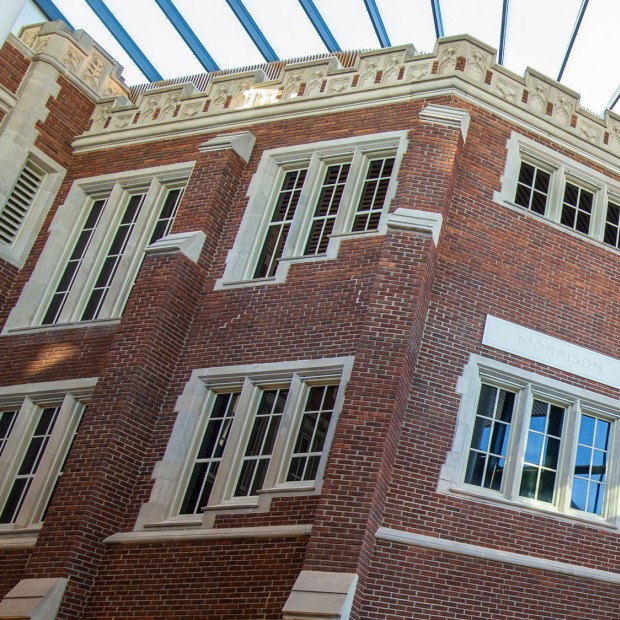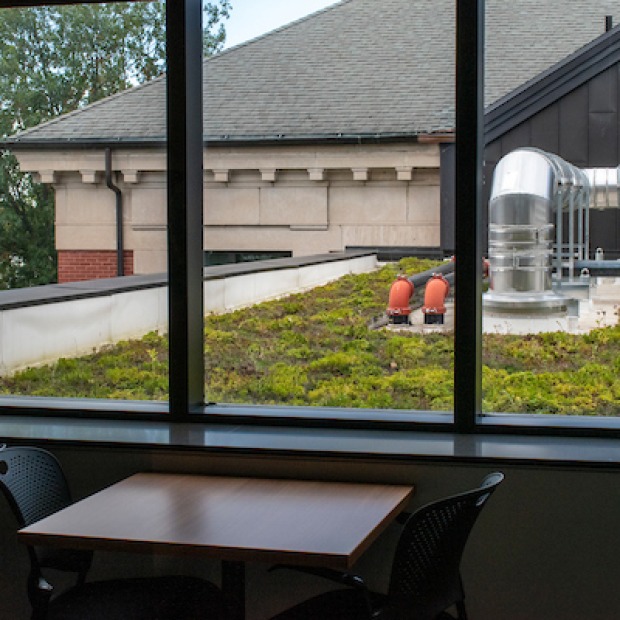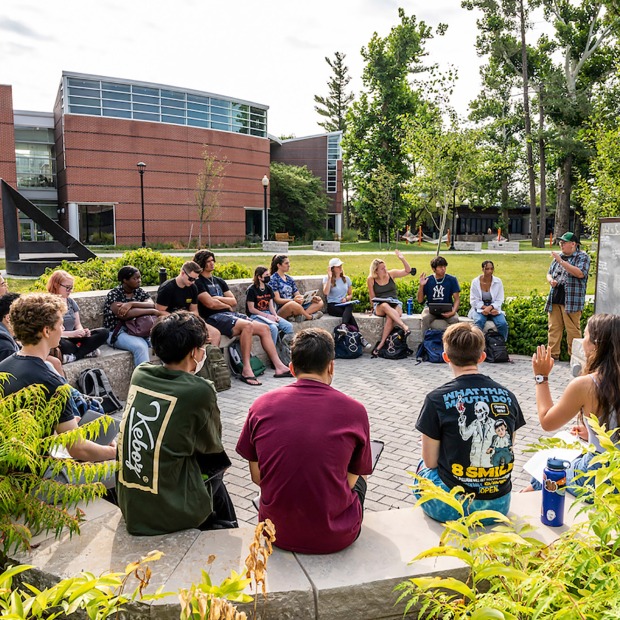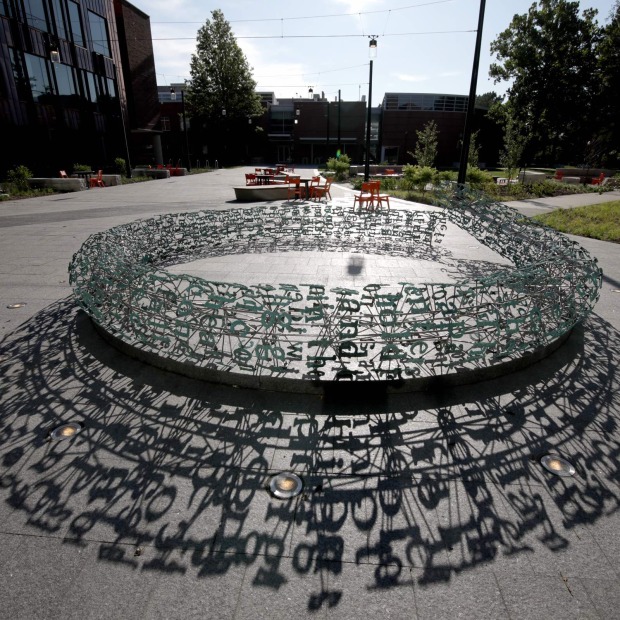Today’s Grinnell faculty teach in dynamic ways. They have moved from the unidirectional concept of “teaching” - professors lecture, students listen - to a more dialogic concept of “teaching and learning.” Whether the coursework involves reading and critiquing Renaissance poetry, analyzing and interpreting data on income inequality, or scrutinizing Stone Age artifacts, a Grinnell education today is a partnership: teachers helping students learn to pose critical questions and rigorously evaluate claims and evidence.
The Humanities and Social Studies Complex is suited for the way we teach and learn at Grinnell today—and flexible enough to accommodate techniques still to come.
Pedagogical approaches may shift even within a single class session. Students may start by listening to a brief introduction from their professor, then break into small groups and use online tools to work with peers at another institution, before returning to the full group to report on their findings and conclusions. Students in the halls between classes may meet up and head to a semi-private breakout space to do project work—the so-called “intellectual collisions” that greatly enrich a student’s education.
Excellent teaching and learning of this kind naturally requires different types of spaces. It requires:
- Spaces that can be easily and quickly reconfigured with mobile furnishings.
- Rooms that support new technologies and the fluid integration of different technologies in a single space.
- Common spaces that facilitate informal collaborations.
- Student learning 'laboratories' for the social studies and humanities (similar to the labs we traditionally think of in the sciences) to enable innovative research and foster interdisciplinary thinking.
But the underlying vision is about more than bricks and mortar, desks and chairs. It is about making possible a new kind of teaching, attuned to emerging research about how best to support great learning.





